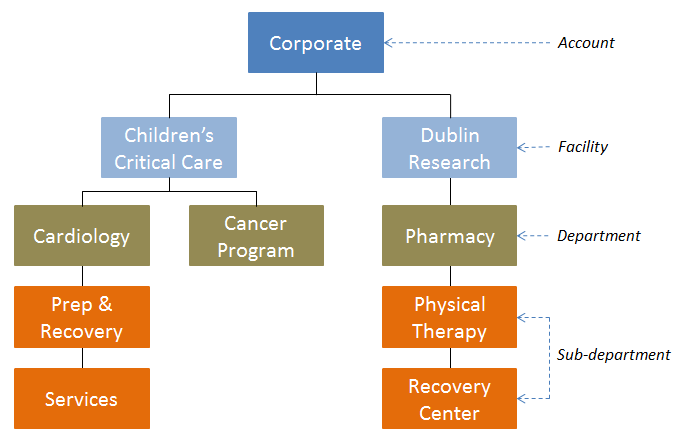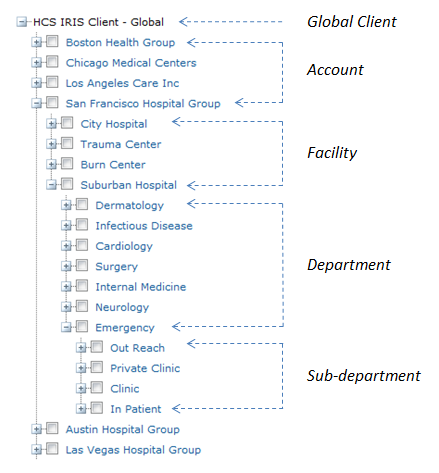Organizational Hierarchy
Organizational Hierarchy is a new concept introduced in symplr Recruiting. It was designed to ease several processes across the system, including defining requisitions and helping determine user access.
In symplr Recruiting10, you use the Facility and Department fields (controlled by the Master Lists area) to help define a requisition and/or job. These fields determine which part of your organization the opening belongs to, where the job actually resides.
Organizational Hierarchy does the exact same thing. Think of the Organizational Hierarchy as an organizational chart – it tells you what departments and facilities you have and where each lies in the structure of your organization.
The main difference is that now all the entities in your organization are now linked. In symplr Recruiting 10, you choose a Facility and Department independently of each other. symplr Recruiting presents an organized tree structure for every entity.
Standard organizational chart:
Organizational Hierarchy in symplr Recruiting:
Note: Enterprise clients will already be familiar with the concept of a linked hierarchy from using the Account/Facility/Department setup in version 10. Organizational Hierarchy works the same way, while still providing additional features as described below.
So what does mean for you?
First and foremost, it provides a defined foundation for your organizational structure, and therefore, all the data that’s entered into symplr Recruiting. Better organization means faster information access and more accurate reporting.
Since these organizational hierarchies are used to define requisition/job locations (i.e. where the opening resides in your organization), they are also used to determine which job templates are available for new requisitions.
Example: If you are creating a new requisition for an opening in Department A, you will only be able to use job templates assigned to that Department. You no longer need to scroll through the entire list of templates, potentially hundreds, to locate the information you require.
Another benefit of organizational hierarchies is that they help determine what information a user has access to in symplr Recruiting. Each user is assigned to an entity in the organizational structure, and will only have access to information for that entity.
Example: A Hiring Manager resides in Department A. When they create a requisition, they will not see requisition templates or job titles from Department B, nor can they create a requisition in that other department.
The bottom line: you save time weeding through available options. Organizational hierarchies filter the information you see, making it easier to find what you need and get on with more important tasks at hand.

